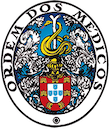Angiosarcoma Hepático e Hemangioma: Um Diagnóstico ABSTRACT
DOI:
https://doi.org/10.20344/amp.8593Palavras-chave:
Hemangioma Cavernoso/diagnóstico, Hemangiossarcoma/diagnóstico, Neoplasias Hepáticas/diagnósticoResumo
Apesar do diagnóstico de hemangioma ser habitualmente simples e baseado na ecografia, a presença de sintomas, o crescimento rápido ou a presença de atipias imagiológicas devem-nos fazer considerar a hipótese de outras entidades, algumas delas malignas como o angiossarcoma. É descrito o caso de doente do sexo feminino de 46 anos, previamente saudável sem exposição a carcinogéneos, refere queixas de dor abdominal durante dois meses. O estudo analítico revelou elevação da gama glutamil transferase e lactato desidrogenase e a ecografia abdominal evidenciou uma lesão nodular de grandes dimensões no lobo direito do fígado, descrita como hemangioma. Um mês mais tarde, realizou uma tomografia computadorizada abdominal que revelou aumento das dimensões da lesão (13,5 para 20 cm), mantendo características imagiológicas de hemangioma. A doente foi submetida a hepatectomia direita e a histologia revelou a presença de angiossarcoma. Após cirurgia, uma tomografia por emissão de positrões-tomografia computadorizada evidenciou metastização hepática e óssea. A doente foi submetida a radioterapia e quimioterapia paliativa com paclitaxel, tendo falecido 10 meses após a cirurgia. Este caso exemplifica a dificuldade do diagnóstico do angiosarcoma baseado apenas nos exames de imagem. Foram realizadas duas tomografias computadorizadas abdominais e nenhuma sugeriu o diagnóstico. Os angiossarcomas são tumores muito agressivos com prognóstico reservado, sendo a cirurgia o único tratamento curativo. No entanto, raramente é realizada devido a doença irressecável ou disseminação à distância.
Downloads
Downloads
Publicado
Como Citar
Edição
Secção
Licença
Todos os artigos publicados na AMP são de acesso aberto e cumprem os requisitos das agências de financiamento ou instituições académicas. Relativamente à utilização por terceiros a AMP rege-se pelos termos da licença Creative Commons ‘Atribuição – Uso Não-Comercial – (CC-BY-NC)’.
É da responsabilidade do autor obter permissão para reproduzir figuras, tabelas, etc., de outras publicações. Após a aceitação de um artigo, os autores serão convidados a preencher uma “Declaração de Responsabilidade Autoral e Partilha de Direitos de Autor “(http://www.actamedicaportuguesa.com/info/AMP-NormasPublicacao.pdf) e a “Declaração de Potenciais Conflitos de Interesse” (http://www.icmje.org/conflicts-of-interest) do ICMJE. Será enviado um e-mail ao autor correspondente, confirmando a receção do manuscrito.
Após a publicação, os autores ficam autorizados a disponibilizar os seus artigos em repositórios das suas instituições de origem, desde que mencionem sempre onde foram publicados e de acordo com a licença Creative Commons









